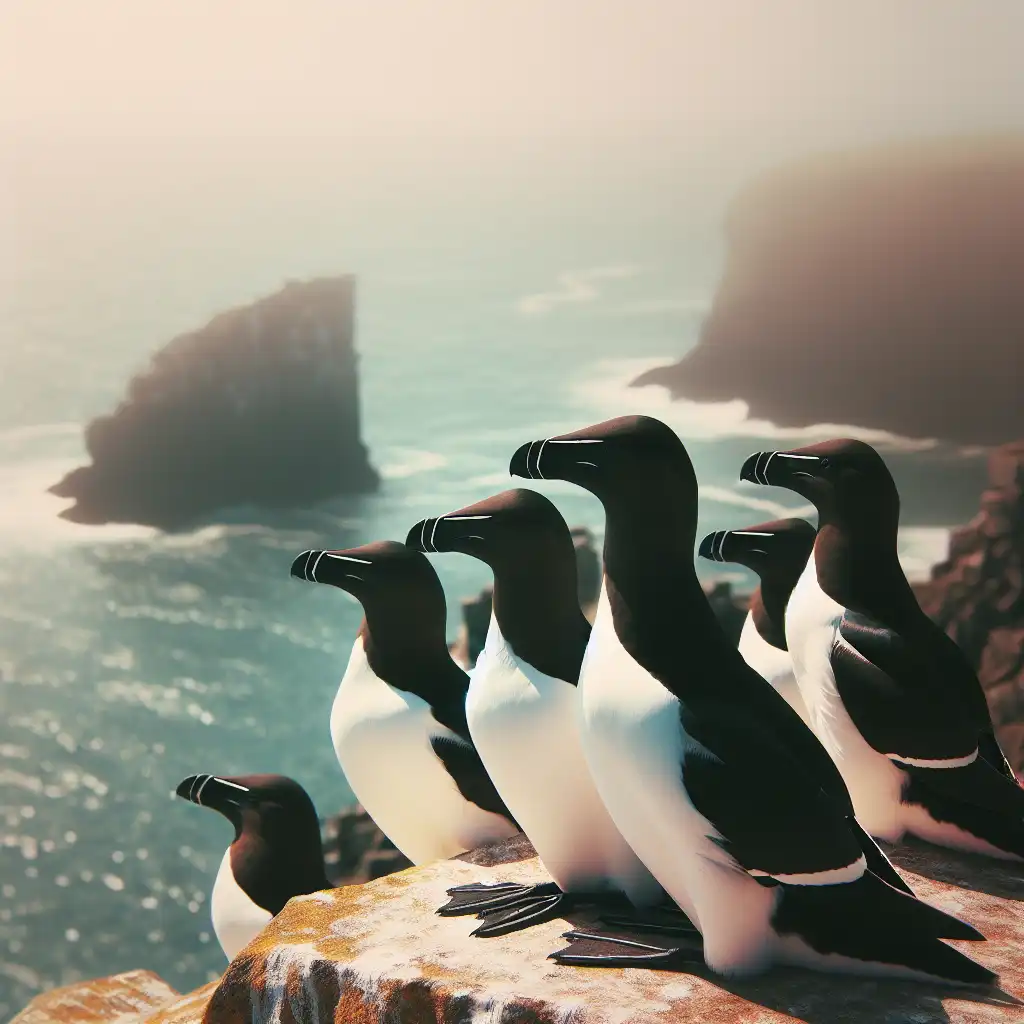
Razorbill
Visual Identification
Razorbills are monochrome birds, resembling penguins, aiding their identification at places like cliffs.  I spotted several razorbills by their distinct black and white coloring on the rocky ledge.
I spotted several razorbills by their distinct black and white coloring on the rocky ledge.
Rare Sighting
Seeing a razorbill on land is uncommon as they're oceanic and only shore-bound during breeding seasons.  We were lucky to see a razorbill on the beach since they are seldom found away from open water.
We were lucky to see a razorbill on the beach since they are seldom found away from open water.
Distinctive Beak
Razorbills' thick beaks set them apart from other seabirds, making the beak a key feature for recognition.  The child drew a razorbill with an exaggerated thick beak, which is one of its most notable traits.
The child drew a razorbill with an exaggerated thick beak, which is one of its most notable traits.